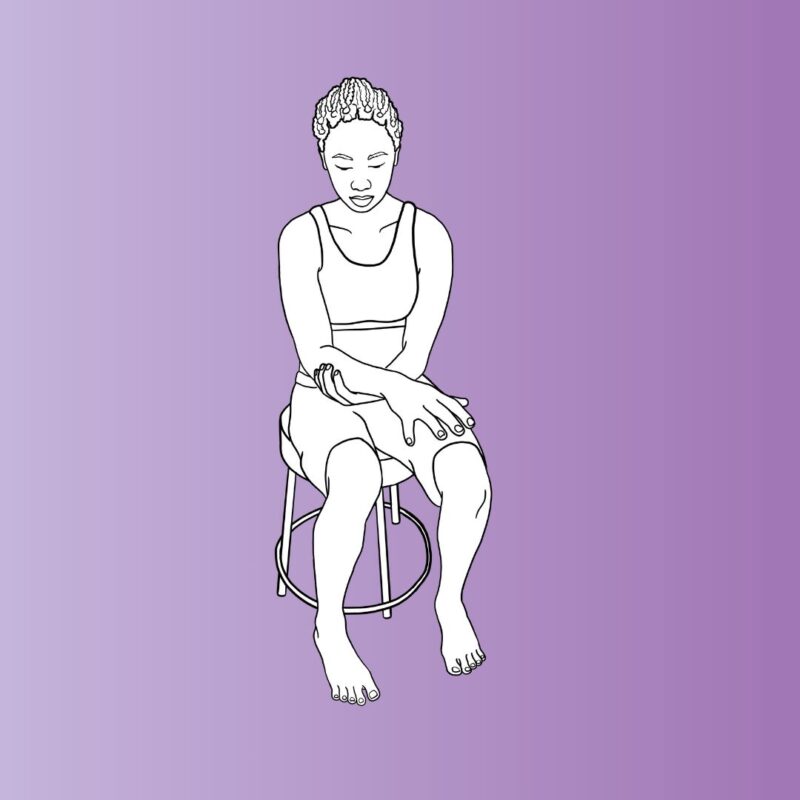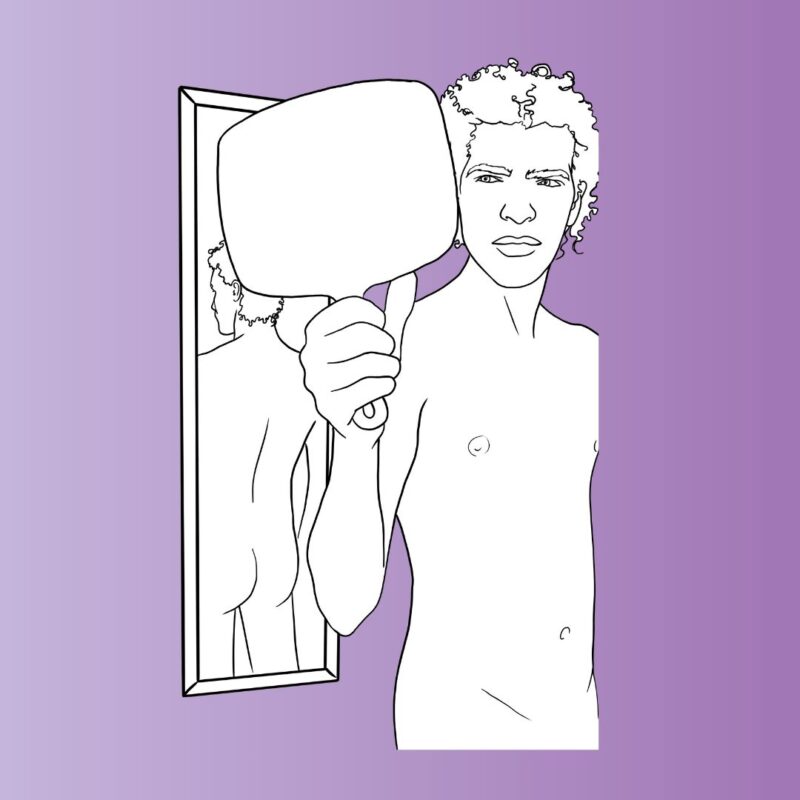Early Detection of Melanoma in Skin of Color

How Do I Detect Melanoma
Early detection of melanoma is key to better outcomes, so skin examinations—both self-exams and those performed by your dermatologist—are important. Knowing what to look for—and where on your body to look—is also important.
You detect melanoma by looking for it. You should do this yourself through regular skin self-examinations. Your dermatologist should also examine your skin. Whether your go to your dermatologist for a regular skin exam or only when you are concerned about a spot on your skin will depend on your risk factors. Ask your dermatologist how often you should be seen.
There are types of melanoma, like acral lentiginous, that may not be linked to UV exposure and do not occur on sun-exposed skin. For example, one study found that 63% of melanomas diagnosed in Black patients occurred on the heel, bottom of the foot, and toenail.1 This is why it is important to examine non-sun-exposed areas on your body for unexplained changes, pigmented lines, rough patches, or wounds that don’t seem to heal.
Another type of melanoma that is not linked to UV exposure and does not occur on sun-exposed skin is mucosal melanoma. While most melanoma appears on the skin, mucosal melanoma occurs in the mucous membranes, or moist surfaces, of areas inside your body. Because a higher percentage of patients with skin of color are diagnosed with mucosal melanoma, it’s important to look for this type of melanoma, too, because finding it early may impact survival. For example, the 5-year survival rate for cutaneous (skin) melanoma was 100% in a study of Black patients diagnosed with melanoma, but it was only 40% for mucosal melanoma.1 Look for a dark spot inside your mouth, nose, or genital areas.
What To Look For
- Moles, lesions, or spots that are new, bleeding, crusting, growing out of the skin, itching, or producing discharge
- A sore that doesn’t seem to heal and returns, especially a site of former injury
- A dry, rough, or raised lesion, that may be black, blue, pink, or red
- An open area that starts small but gradually increases in size
- A dark line that runs through or below a fingernail or toenail
- A dark spot inside your mouth, around the anal area, or around the vagina
Perform Regular Skin Self-Examinations and See a Dermatologist
Regardless of skin tone, everyone should be vigilant about monitoring their skin for signs of melanoma. Performing regular self-examinations of your skin is a simple yet effective way to monitor any changes that may indicate melanoma.
Before you begin self-exams, it is recommended to see a dermatologist for a complete skin exam to establish a baseline of what is considered “normal” for your skin. This will help you identify any new or changing moles or spots during your monthly self-exams. The guidelines for a skin self-exam are to look for anything on your skin that is symptomatic—unexplainable itching, unexpected bleeds, or crusts—and any new or changing spot.
In addition to performing regular self-examinations, it is important to see a healthcare provider regularly for a professional skin exam. Dermatologists are trained to identify early signs of melanoma that may not be noticeable to the untrained eye. By combining self-exams with professional exams, you can increase the likelihood of detecting melanoma in its early stages when treatment is most effective.
Skin cancer can develop on anyone regardless of their ethnicity or background. Therefore, it is important for everyone to take proactive steps in monitoring their own health and seeking medical attention if they notice any changes in their skin.
How to Perform a Skin Self Examination
1. Your Skin Check: Begin in a place with good lightingand a mirror, such as a bathroom. Start by getting comfortable and finding a spot to sit down, perhaps on a stool, the side of a bathtub or a towel laid on the floor.

2. Your Feet: Carefully examine your feet, especially the bottoms of each foot, your toe nails, and your heels. Check the tops of your feet, making sure to check between your toes, too.

3. Your Lower Torso: Sit on a chair and scan your legs using the handheld mirror to see the back of each leg.Also use the handheld mirror to check your genitals and the insides of your thighs.

4. Your Arms: Carefully examine your hands and forearms, looking at the back of the hands, your palms, nails, and each finger. Lift your arms to check underneath the arms and the sides of your body, too.

5. Your Front Torso: Face the mirror to inspect your neck, chest, breasts (for women) and abdomen. Examine your face, including your nose, lips, inside your mouth, and ears.

6. Your Back Torso: Face away from the mirror to inspect your back, shoulders, the back of your neck and any areas not visible from the front. Continue down to examine your buttocks and the backs of your thighs.

References
1. Wix SN, Brown AB, Heberton M et al. Clinical Features and Outcomes of Black Patients With Melanoma. JAMA Dermatol. 2024;160(3):328-333. doi: 10.1001/jamadermatol.2023.5789

